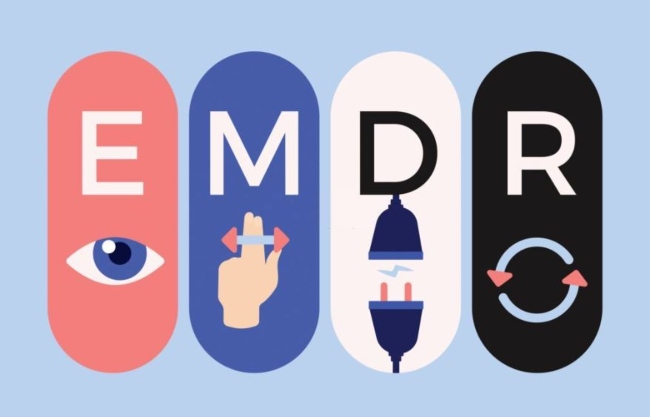EMDR Therapy (Eye Movement Desensitization and Reprocessing) is an innovative and effective therapeutic approach that has gained worldwide recognition for its ability to treat trauma and other emotional issues. Developed by psychologist Francine Shapiro in the 1980s, this technique is based on the idea that unprocessed traumatic memories can cause emotional distress and psychological symptoms. Through Terapia EMDR, these memories are reprocessed, allowing for a significant reduction in symptoms and improving emotional well-being.
What is EMDR Therapy?
EMDR Therapy is a therapeutic approach that combines elements of different treatments, including cognitive-behavioral therapy (CBT) and exposure techniques, with a unique component of bilateral eye movements. These eye movements are similar to those that occur during REM (Rapid Eye Movement) sleep, a phase of sleep associated with information processing and memory consolidation.
EMDR Therapy is used to treat a variety of issues, including:
- Post-Traumatic Stress Disorder (PTSD)
- Anxiety
- Depression
- Phobias
- Panic disorders
- Addictions
- Chronic pain
How Does EMDR Therapy Work?
The EMDR process is carried out in several phases, each designed to prepare the client and process traumatic memories safely and effectively.
Phase 1: History and Treatment Planning
In this phase, the therapist works with the client to obtain a detailed history of their life and current problems. This includes identifying specific traumatic memories that will be the focus of the treatment. The therapist also explains the EMDR process and establishes a personalized treatment plan.
Phase 2: Preparation
Preparation involves teaching the client various coping and self-care techniques that can be used during and after EMDR sessions. This is crucial to ensure the client feels safe and supported throughout the process.
Phase 3: Assessment
During the assessment, the therapist helps the client identify specific aspects of the traumatic memory, including the mental image, negative beliefs associated with it, and physical sensations. This information is used to establish a baseline for measuring progress.
Phase 4: Desensitization
Desensitization is the core phase of EMDR, where bilateral eye movements are used to reprocess the traumatic memory. The client focuses on the memory while following the therapist’s hand movements with their eyes. This process is repeated until the memory loses its negative emotional charge.
Phase 5: Installation
In this phase, the therapist works to strengthen the positive beliefs that the client wishes to associate with the reprocessed traumatic memory. This helps to integrate the memory in a healthy and positive way.
Phase 6: Body Scan
The body scan involves evaluating any remaining physical sensations associated with the traumatic memory. If sensations are identified, additional eye movements are used to process them.
Phase 7: Closure
Closure is a crucial part of each EMDR session, where the therapist ensures the client feels balanced and safe before ending the session. Self-care techniques are reviewed, and homework assignments may be given if necessary.
Phase 8: Reevaluation
In subsequent sessions, the client’s progress is reviewed, and the effects of the treatment are evaluated. This ensures that any unresolved aspects of the traumatic memory are adequately addressed.
Benefits of EMDR Therapy
EMDR Therapy offers numerous benefits for emotional well-being, including:
Reduction of Trauma Symptoms
One of the most significant benefits of EMDR is its ability to reduce PTSD symptoms and other trauma-related disorders. Many clients report a significant decrease in anxiety, flashbacks, and nightmares.
Improved Self-Esteem and Positive Beliefs
EMDR helps transform negative beliefs associated with traumatic memories into positive and empowering beliefs. This can lead to improved self-esteem and a more positive self-view.
Effective Treatment for Various Issues
In addition to PTSD, EMDR has proven effective in treating a wide range of emotional issues, including phobias, panic disorders, and addictions. This makes it a versatile and valuable option for many individuals.
Relatively Quick Process
Unlike some traditional therapies that may require years of treatment, EMDR often produces results in a relatively short period. This is particularly beneficial for those seeking quick relief from their symptoms.
No Need to Reveal Extensive Details
A unique advantage of EMDR is that clients do not necessarily have to talk in detail about their traumas. This can make therapy more accessible and less intimidating for those who find it difficult to discuss their traumatic experiences.
Conclusion
EMDR Therapy is a powerful and effective approach for treating trauma and other emotional issues. Through a structured process that includes bilateral eye movements and memory processing techniques, EMDR helps individuals reduce their symptoms, improve their emotional well-being, and transform negative beliefs. If you are seeking a solution for persistent emotional issues, consider exploring EMDR Therapy as a viable and promising option.

